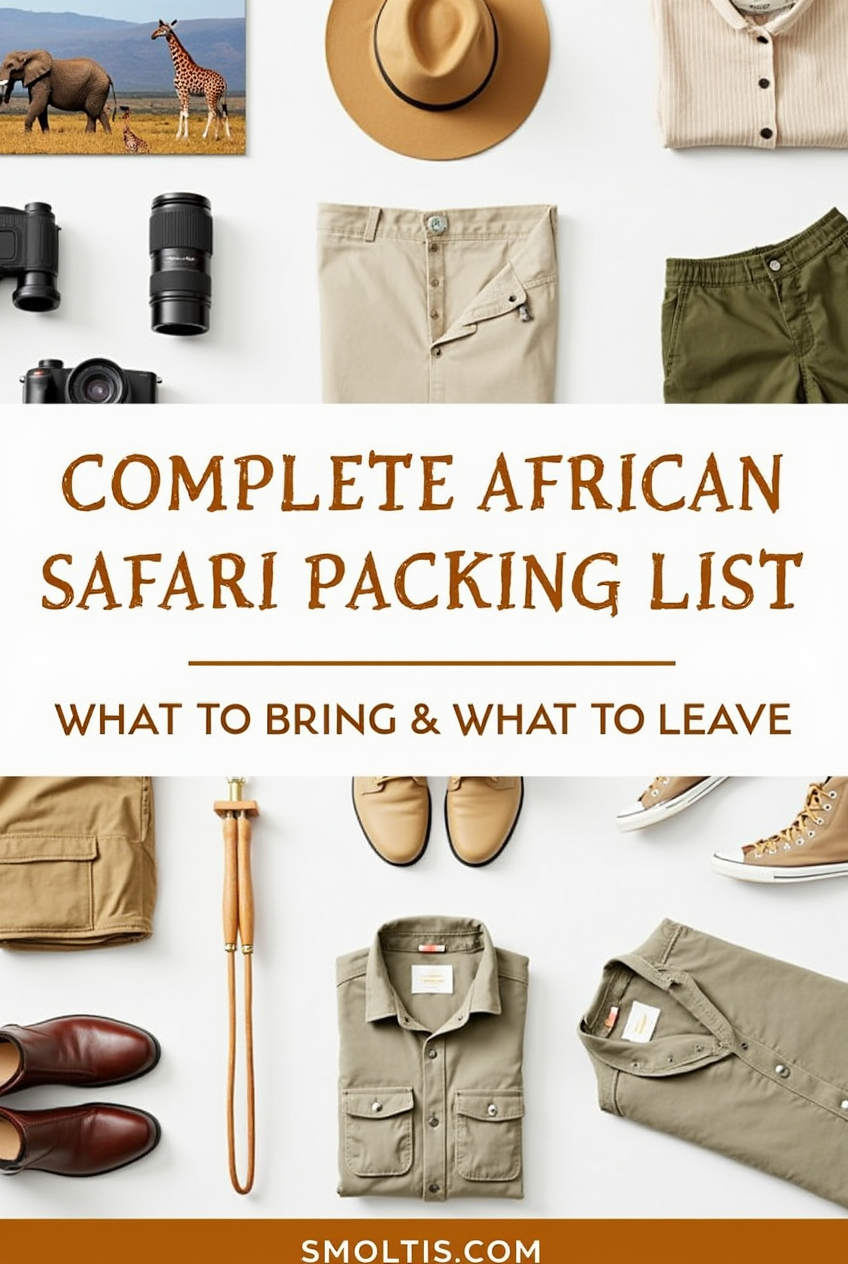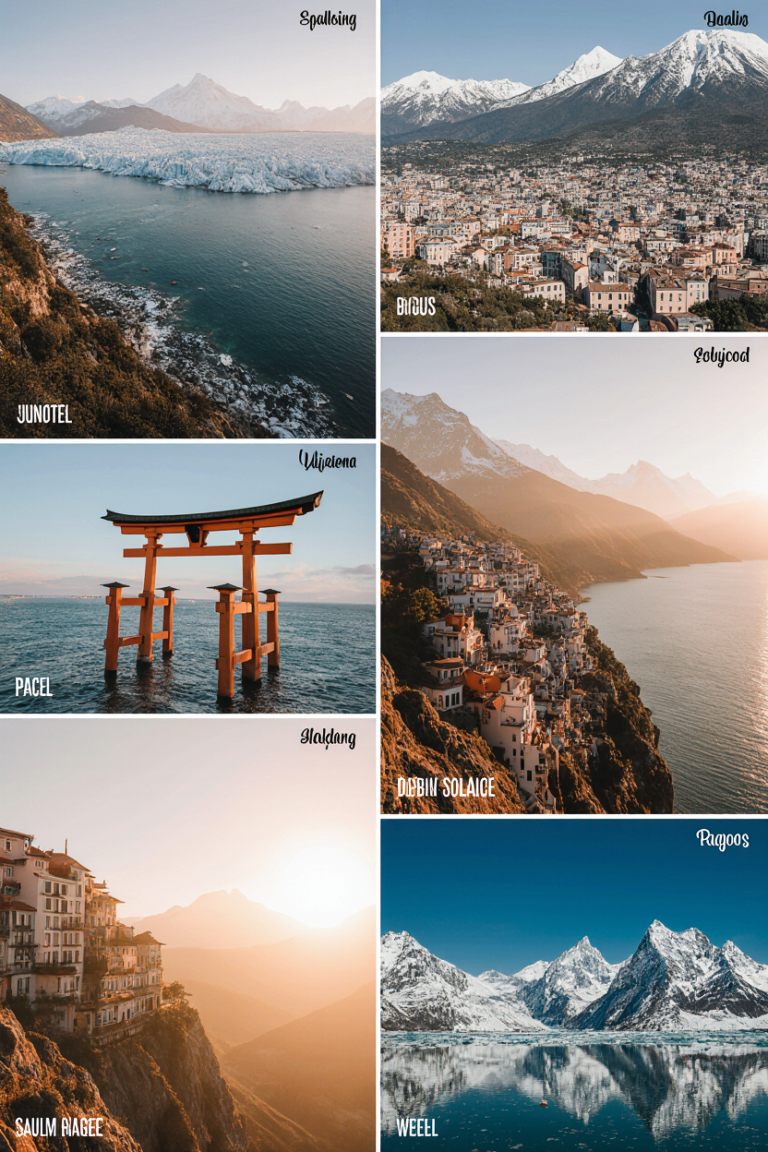Complete African Safari Packing List: What to Bring & What to Leave
Complete African Safari Packing List Embarking on an African safari is an exhilarating adventure that requires careful planning, especially when it comes to packing. The right gear can make all the difference between a memorable experience and a challenging one.

what to pack for African safari
To ensure a successful and enjoyable trip, it’s crucial to be well-prepared. This comprehensive guide will walk you through the essentials of what to bring and what to leave behind, providing you with practical advice for the adventure of a lifetime.
Key Takeaways
- Understand the climate and terrain of your safari destination
- Pack layers for varying temperatures
- Bring essential gear like binoculars and a first-aid kit
- Choose comfortable and suitable clothing
- Leave unnecessary items behind to avoid luggage overload
Planning Your Safari Packing Strategy
Before embarking on your African safari adventure, it’s essential to develop a thoughtful packing strategy. A well-planned approach ensures that you are prepared for the challenges of the safari while maintaining the flexibility to move freely.
Understanding Safari Climate and Conditions
African safaris take place in diverse environments, from the savannas to forests, each with its unique climate and conditions. Understanding these factors is crucial for packing the right gear. For instance, savannas are generally warm and dry, while forests can be cooler and more humid. Researching your destination’s specific climate and potential weather conditions will help you pack appropriately.

safari climate conditions
Safari Packing Principles: Less is More
The principle of packing less is particularly relevant for safaris, where mobility and flexibility are key. Overpacking can lead to unnecessary stress and fatigue. Focus on bringing essential items that can be mixed and matched to create multiple outfits. This approach not only reduces luggage weight but also makes your safari experience more enjoyable.
What to Pack for African Safari: Essential Clothing
The key to a successful safari lies in the clothing you choose to pack, which should be both practical and comfortable. The right clothing can make a significant difference in your overall experience, allowing you to enjoy the beauty of the African wilderness without unnecessary discomfort.
Daytime Safari Attire
For daytime safaris, it’s essential to wear clothing that is both comfortable and suitable for the African environment.
Neutral Colors and Breathable Fabrics
Neutral-colored clothing, such as khaki, beige, and olive green, helps you blend in with the surroundings, making it easier to observe wildlife without startling them. Breathable fabrics like cotton and linen are ideal as they keep you cool in the heat.
Layering Options for Temperature Changes
Although it can be hot during the day, the temperature can drop significantly in the early morning and evening. Packing layers such as lightweight sweaters or fleeces can help you adjust to these temperature changes.

safari clothing
Evening and Nighttime Clothing
As the sun sets, the temperature drops, and it’s time to add some layers. Long-sleeved shirts and lightweight trousers are recommended for the evenings to keep insects at bay and to stay warm.
Footwear for Different Safari Activities
The right footwear is crucial for different safari activities. Sturdy, comfortable boots are a must for walking safaris, while sneakers or lightweight shoes are suitable for game drives. Ensure your footwear is broken in to avoid discomfort during your safari.
| Activity | Recommended Footwear | Key Features |
| Walking Safari | Sturdy Boots | Ankle support, waterproof, good grip |
| Game Drive | Sneakers/Lightweight Shoes | Comfortable, easy to move around |
| Camp/Lodge | Sandals/Flip Flops | Breathable, comfortable for relaxation |
Safari Gear and Equipment Essentials
Beyond the appropriate clothing, several pieces of gear and equipment are vital for a hassle-free and enjoyable safari experience. The right accessories can make a significant difference in your adventure, from enhancing your viewing experience to ensuring your comfort and safety.
Luggage and Bags: Soft-sided is Best
When it comes to luggage for your safari, soft-sided bags are highly recommended. They offer flexibility and are easier to store in the often cramped safari vehicles. Look for bags with multiple compartments to help keep your gear organized.
Binoculars and Viewing Equipment
Binoculars are a must-have for any safari-goer. They allow you to get a closer look at wildlife without disturbing them. When choosing binoculars, consider the magnification power and lens size. A pair with good waterproofing is also essential for safaris that may involve early morning mist or unexpected rain.
safari accessories
Other Must-Have Safari Gear
In addition to binoculars and appropriate luggage, there are several other pieces of gear that are considered safari essentials.
Headlamps and Flashlights
A reliable light source is crucial for navigating your campsite or vehicle during the night. Consider a headlamp for hands-free operation.
Daypacks and Water Bottles
A sturdy daypack is necessary for carrying essentials during day trips, while a refillable water bottle is both eco-friendly and ensures you stay hydrated.
Safari Hats and Accessories
A good quality safari hat can protect you from the sun, while other accessories like sunglasses and sunscreen are also vital for your comfort and protection.
| Essential Item | Description | Importance Level |
| Binoculars | For wildlife viewing | High |
| Soft-sided Luggage | For easy storage in safari vehicles | High |
| Headlamp/Flashlight | For nighttime navigation | High |
| Daypack | For carrying daily essentials | Medium |
| Safari Hat | For sun protection | High |
Health and Safety Items for Your Safari
Health and safety should be at the forefront of your safari packing list. Ensuring you’re prepared for potential health risks and safety concerns can significantly enhance your overall safari experience.
First Aid and Medication Essentials
A well-stocked first aid kit is a must-have item for any safari. It should include essentials that can help you respond to minor medical emergencies.
Prescription Medications and Documentation
It’s crucial to pack any personal prescription medications in sufficient quantities for the duration of your trip, plus some extra in case of unexpected delays. Don’t forget to carry the prescription or a doctor’s note, especially for controlled substances.
Basic First Aid Supplies
Basic supplies should include bandages, antiseptic wipes, pain relievers, and any medications for common travel ailments.
Stomach Remedies and Pain Relievers
Given the nature of travel and changes in diet, stomach remedies and pain relievers are prudent additions to your first aid kit.
| First Aid Item | Purpose |
| Bandages | Wound care |
| Antiseptic wipes | Infection prevention |
| Pain relievers | Pain management |
Sun and Insect Protection
Protecting yourself from the sun and insects is vital for your health and comfort during the safari.
Sunscreen and After-Sun Care
Use broad-spectrum sunscreen with a high SPF and don’t forget to reapply regularly. After-sun lotion or aloe vera can help soothe sun-exposed skin.
Insect Repellent and Bite Treatment
Insect repellent containing DEET or picaridin is effective against mosquitoes and other biting insects. Calamine lotion or antihistamine cream can help alleviate bite reactions.
Malaria Prevention
Depending on your destination, malaria prophylaxis may be recommended. Consult your healthcare provider for the most appropriate medication.
By carefully considering these health and safety items, you can ensure a more enjoyable and safe safari experience. Remember, a well-prepared traveler is always better equipped to handle the unexpected.
Electronics and Photography Equipment
An African safari is a photographer’s paradise, but it demands careful selection of electronics and photography equipment. Capturing the beauty and essence of the wilderness and its wildlife requires the right gear to ensure you don’t miss a moment.
Camera Gear for Wildlife Photography
When it comes to wildlife photography, having the right camera gear is crucial. This includes lenses, camera bodies, and accessories that can withstand the safari environment.
Lenses and Camera Bodies
A good telephoto lens (at least 200mm) is essential for capturing wildlife from a safe distance. Consider a camera body with good autofocus and burst mode capabilities for the best results.
Memory Cards and Storage Solutions
Bringing multiple memory cards and a portable storage solution is vital to store your photos. Consider cloud storage options as well for backup.
Camera Protection in Safari Conditions
Protect your equipment from dust and extreme temperatures. Use camera cases and lens cleaning kits to keep your gear in good condition.
| Equipment | Description | Importance |
| Telephoto Lens | For capturing wildlife from a distance | High |
| Camera Body | Should have good autofocus and burst mode | High |
| Memory Cards | For storing photos; bring extras | Medium |
| Camera Case | For protecting equipment | Medium |
Power Solutions and Adapters
Keeping your devices charged is crucial. Bring portable power banks, and consider adapters for charging in your safari vehicle’s power outlets.
Communication Devices and Apps
Stay connected with your safari group and guides using two-way radios or communication apps on your smartphone. Ensure your devices are fully charged and consider waterproof cases.
Documents, Money, and Practical Items
Beyond the excitement of packing for an African safari, it’s crucial to focus on the often-forgotten documents, financial considerations, and practical items that ensure a smooth journey.
Required Travel Documents
Ensuring you have the correct travel documents is paramount for a hassle-free safari experience. This includes:
- A valid passport with at least six months’ validity
- Visas for entry into the countries on your itinerary
- Travel insurance documents that cover medical emergencies and evacuations
- Health certificates, particularly if you’re traveling from or through areas with specific health concerns
It’s also wise to make digital copies of these documents and leave a copy with a trusted friend or family member back home.
Money and Payment Considerations
Understanding the local currency and having a mix of payment methods can make your safari more enjoyable. Consider:
- Local currencies for the countries you’re visiting
- Credit cards that don’t charge foreign transaction fees
- US dollars for certain transactions or emergencies
Informing your bank of your travel plans can prevent your cards from being flagged for suspicious activity.
Practical Items Often Forgotten
Some practical items can significantly enhance your comfort and experience on safari. Don’t forget to pack:
- Reusable water bottles to reduce plastic waste
- Earplugs and eye masks for better sleep
- A small daypack for daily excursions
- Snacks, especially if you have specific dietary needs or preferences
These items, while not essential, can make a big difference in your daily comfort and enjoyment.
What to Leave Behind: Safari Packing Don’ts
Safari packing isn’t just about what you bring; it’s also about what you leave behind. Certain items can be unnecessary, cumbersome, or even prohibited on safaris.
To avoid unnecessary baggage and potential issues during your trip, consider leaving behind items like unnecessary electronics, valuable jewelry, and overly formal clothing. These can be a hindrance rather than a help during your safari adventure.
Additionally, it’s wise to avoid packing items that are too bulky or heavy, as they can make transportation and movement more difficult. By being mindful of what to leave behind, you can ensure a smoother, more enjoyable safari experience.
For more tips on what to pack for an African safari and to get the most out of your adventure, consider the essentials and leave the non-essentials behind.
Conclusion
With a comprehensive understanding of what to pack for an African safari, you’re now ready to embark on an unforgettable adventure. By following this guide, you’ll be well-equipped with the must-have items for safari, ensuring a stress-free and enjoyable experience.
Double-check your packing list against the specific requirements and recommendations for your tour to ensure you’re fully prepared. A well-planned safari checklist is key to a successful journey, covering essential clothing, gear, health, and safety items.
As you prepare for your African safari, remember to stay focused on the essentials, from comfortable clothing to necessary gear and equipment. With this guide, you’ll be able to create a personalized safari checklist that meets your needs, ensuring a memorable and enjoyable experience.
FAQ
What are the most essential items to pack for an African safari?
The most essential items to pack for an African safari include neutral-colored, breathable clothing, sturdy footwear, binoculars, a camera with a good zoom lens, sunscreen, insect repellent, and a first aid kit. Don’t forget to pack layers for temperature changes and a hat for sun protection.
What type of clothing is best for a safari?
Neutral-colored, breathable clothing is best for a safari. Avoid bright colors and loud patterns, as they can scare away wildlife. Opt for lightweight, quick-drying fabrics that will keep you cool and comfortable in the African climate.
Can I wear shorts on a safari?
While shorts are acceptable for some safari activities, it’s generally recommended to wear long pants and sleeves to protect yourself from the sun, insects, and thorns. Consider packing lightweight, breathable pants that can be easily converted into shorts if needed.
What kind of footwear is suitable for a safari?
Sturdy, comfortable footwear is essential for a safari. Consider packing hiking boots or shoes with good tread and ankle support for walking safaris. You may also want to bring sandals or water shoes for relaxing at your camp or lodge.
Are there any specific gear or equipment recommendations for wildlife viewing?
Binoculars are a must-have for wildlife viewing on a safari. Consider packing a pair with good magnification and a wide field of view. A camera with a good zoom lens is also essential for capturing wildlife photos.
How can I protect my camera gear on a safari?
To protect your camera gear on a safari, consider packing a camera bag or case with padding and protection. You may also want to bring a lens cleaning kit and a camera rain cover to protect your equipment from the elements.
What health and safety precautions should I take on a safari?
To stay safe and healthy on a safari, be sure to pack sunscreen, insect repellent, and a first aid kit. Take malaria prevention medication if recommended by your doctor, and stay hydrated by drinking plenty of water.
Can I use my regular luggage for a safari?
Soft-sided luggage is recommended for safaris, as it is more flexible and easier to store in safari vehicles. Consider packing a duffel bag or backpack with multiple compartments to keep your gear organized.
Are there any specific documents or travel arrangements I need to make for a safari?
Be sure to check with your tour operator for specific document requirements, such as a valid passport, visa, and travel insurance. Make sure to also arrange for any necessary vaccinations or medications before your trip.







